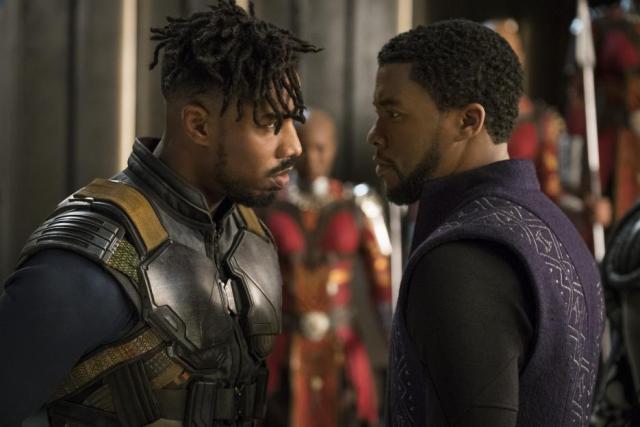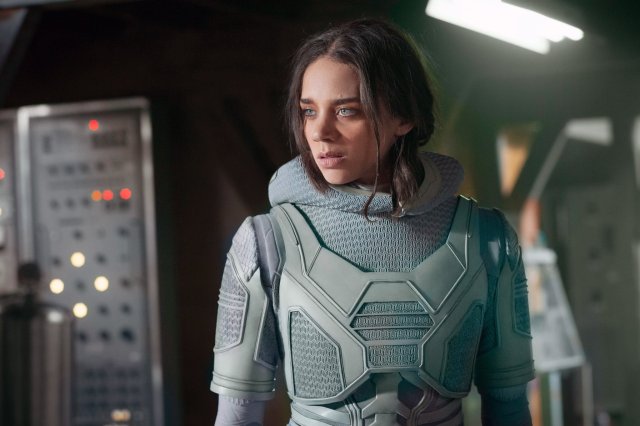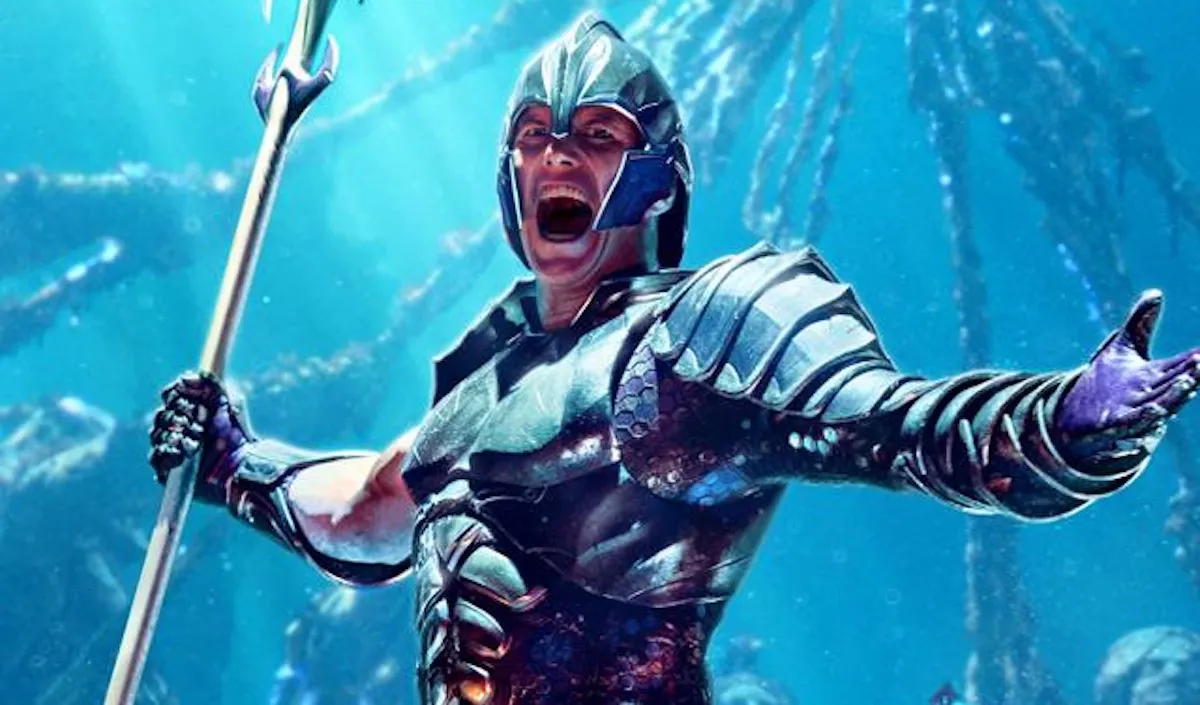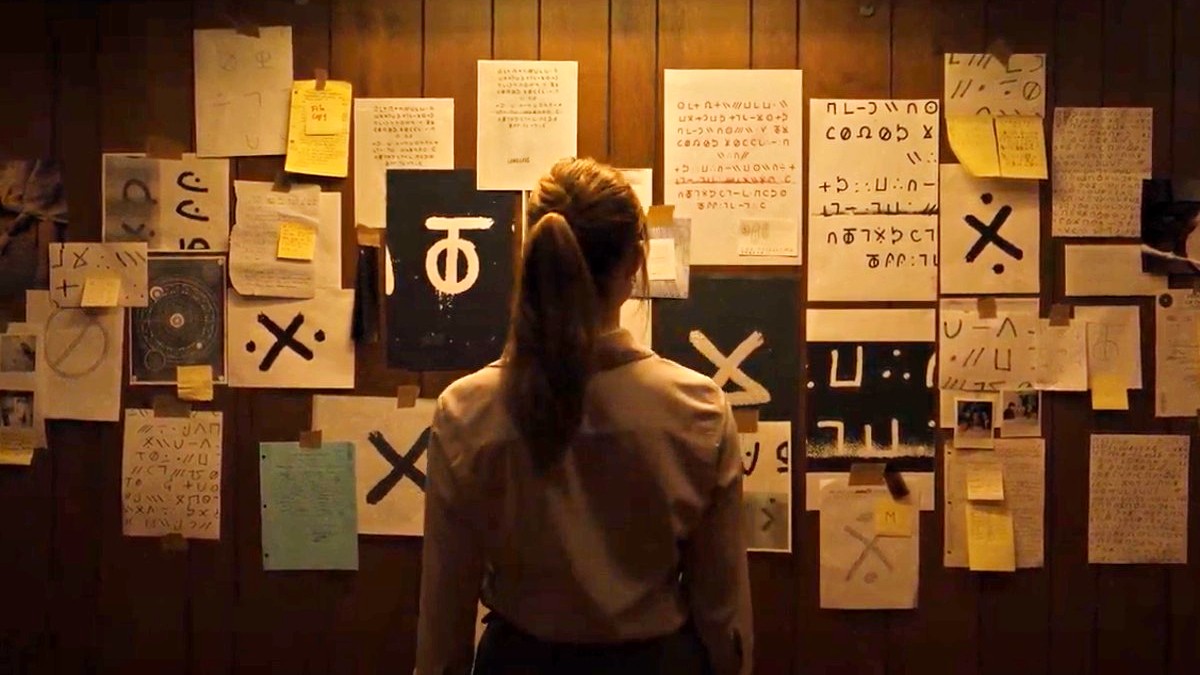***Some spoilers for Aquaman; skip the Orm part if you don’t want my Orm-take***
Studios are making strides in terms of inclusion where its heroes are concerned, but its villains are still suffering from a lack of diversity and a dearth of character development.
The old saying goes that “a hero is only as good as his villain,” and if we view superpowered protagonists through this lens, a lot of our favorite heroes emerge tarnished by their lack of a worthy adversary.
You can still make a thumbs-up movie that features an exciting and groundbreaking hero without an excellent villain, but there’s always going to be the sense of something missing, of missed opportunities. And the trend of underwritten, underbaked villains appears to be continuing with no end in sight.
I like to use Wonder Woman as a recent example. Patty Jenkins’ take on Diana Prince was a success by every conceivable metric, financially and critically and culturally. I loved Wonder Woman. But I hated what it did with its villains: the fascinating Doctor Poison, one of few female baddies to grace the screen, ended up as the second string with little to do. How do you show us a character like Doctor Poison and not explore what makes her tick?
The reveal of David Thewlis’s Sir Patrick as Ares didn’t feel earned or particularly exciting, and his throwdown with Diana was one of the movie’s major misfires, a CGI mess like so many final battles we’ve seen before. Is Wonder Woman still a great superhero movie? Yes. Would it have entered a godlike realm with a truly memorable and fully-fleshed villain worthy of our heroine? A hundred times yes.
I don’t think the studios are unaware of their villain problem. Marvel, in particular, has made some advances as of late, after being lambasted for villains like Malekith the Accursed dark elf, and, well, every Iron Man bad guy ever: Michael B. Jordan’s Erik Killmonger is one of the best superhero villains we’ve had, full stop. But an enormous amount of credit for Killmonger’s effectiveness goes to Jordan’s bravura performance, just as Tom Hiddleston’s acting rescued Loki from being a cardboard cut-out of a character.
While Killmonger elicited sympathy because Black Panther established his backstory and motivation to make us understand why he was doing what he was doing, in the end, Killmonger is also given an anticlimactic CGI’d battle. It’s as though filmmakers, or the studios overseeing them, can’t stop themselves from stepping back at the finale from the human side of the story—the part that makes us invested in superheroes and villains, no matter how alien or immortal they may be—and reducing them to digitized pixels who cause big explosions with lighting or smash whole cities in their final moments. You don’t need the spectacle of a Sokovia hovering over the Earth to make for a poignant end; Age of Ultron is proof of that.

When you think about Killmonger and Black Panther, does your brain flash to his masked fight with T’Challa amidst computer-generated vibranium trains speeding past? No, you remember Killmonger at the museum talking about colonialism and conquest, Killmonger challenging T’Challa at the waterfall as he explains the violence that forged him, Killmonger meeting his father on an ancestral plane that takes the shape of an Oakland apartment, Killmonger’s searingly powerful final speech. These are the sort of revealing dives into character that make an audience care about—or at least understand—the villain, which raises the stakes for the hero enormously and makes for a better movie overall.
Patrick Wilson’s Orm in Aquaman got me thinking about superhero villains again (though they are never far from my mind). Wilson is an accomplished actor, and it’s through sheer force of this alone that Orm is viable at all. The character is written without nuance, given leaden cartoonish mustache-twirling things to say (“Call me … Oceanmaster!!”), and dressed with an eye on undersea over-the-top flamboyance to create a stark contrast to Arthur Curry’s rugged, everyman, often shirtless heroism.
Orm is far from the worst villain I’ve encountered—Wilson makes him compellingly watchable. But once again it feels like a missed opportunity to make him a fully-fleshed foil, whose presence would have elevated Aquaman overall. When a hero defeats a fantastic villain, that’s reflective of the hero’s own greatness. When a hero defeats a lukewarm villain, it never feels as though there’s much to cheer about.
It wouldn’t have been so hard in Orm’s case. Eliminate a few of Aquaman‘s roughly 3000 underwater battles or the wholly unnecessary sequence when the movie wants to be Indiana Jones and The Last Crusade, and give us more of Orm’s backstory. We know next to nothing about him, and so it’s hard to care about what he does or does not do, whether he lives or dies.
He and Arthur share a mother; Orm grew up as Prince of Atlantis under trying circumstances. Show us a scene or two of what shaped him and I would have been 180% more invested in both Orm and Arthur. The movie skillfully flashes back to Arthur’s youth at a few different ages; what a gorgeous parallel it might have been to show what Orm was up to in his very different environment.
One of the most interesting interchanges between Orm and Arthur comes when Orm suggests that he has no real desire to kill his half-brother. Arthur also ruminates on what their relationship might have been in other circumstances. Give us more instances of this—of pathos and connection, of who these men really are outside of bombastic gladiatorial battles—and Aquaman would have won me over hook, line, and sinker.
The model for how to do this in superhero films still remains Captain America: The Winter Soldier, by far the Russos’ best Marvel production. That movie demonstrates that you don’t need ten pages of exposition or seventeen side adventures to make for effective characterization. It’s not that difficult to give both protagonist and antagonist multiple layers so that neither is one-dimensional.
A single flashback to historic Brooklyn shows the depth of feeling and attachment that once existed between Steve Rogers and Bucky Barnes. A quick visit to a museum exhibit and a few lines of well-written dialogue establishes for our hero how much his old best friend, now positioned as adversary, means to him. When Cap and the Winter Soldier fight at the movie’s end, every punch is wrenching because of this emotional weight built up between them.
You can have the blockbuster grandiosity of a climactic battle on a flaming helicarrier at risk of falling from the sky, but that final fight works exceptionally well because we can see their faces. No CGI tricks are necessary. The action is brutal and their struggle so intimately wrought that it launched fifty thousand fanfiction stories (I am not exaggerating those numbers).
Even more effective? Throw a wrench into expectations. Have the hero throw away his shield, his very identity, and refuse to fight the bad guy who occupied such an important place in his life. Have neither of them win. Have the “bad guy” be forced to reevaluate who he is and undergo change because of the hero’s actions. Keep the audience on uncertain ground and create one of the best superhero movies to date.

Marvel tried to repeat some of its Winter Soldier themes in Ant-Man and The Wasp, making Hannah John-Kamen’s Ghost another flavor of Winter Soldier: exploited by a shadowy organization, trained into a killing machine, a mostly unwilling bad guy who turns out to be more of an antihero and may in the future be a valuable friend.
So why didn’t Ghost work as well? Because the rest of the movie is so overstuffed with plot points and hijinks that there isn’t real room for her story to have weight. Because there’s another villain she has to share space with, who’s ridiculous and distracting and unnecessary, given bad dialogue and no real motivation, and who no one remembered five minutes after they left the theater. Do you recall his name? I sure don’t.
I had high hopes for Ghost, as she was also, astonishingly, Marvel’s first female villain of color in nearly twenty movies. That Ghost was cast the way she was is a crucial step forward for the studio. But female villains in general continue to suffer from the same underdevelopment as their male counterparts, and since there are so few of them the issue is particularly glaring.
The cinematic MCU’s only other female villain is Hela, motivated by not much more than pure evil and animated by campy, sketchily drawn theatrics. She spends zero time with our hero(es) and so their struggle remains surface-deep. The only character she has real history with, Valkyrie, doesn’t ever get to challenge her one-on-one.
Hela’s there for Thor’s personal development; she has none of her own. Even embodied by the great Cate Blanchett, Hela is a snoozefest whose scenes I find myself fast-forwarding through. She’s memorable because of her costume, not her character. Thor: Ragnarok is one of my favorite movies, but I will criticize its antagonist all the livelong day, because a good movie could have been excellent with a little more attention to detail and time taken to make us care about the villain.
So for female villains we’ve had Doctor Poison, Hela, Ghost, and … (looks at notes) Enchantress. Harley Quinn is a character with a considerable amount of potential, but she’s in antihero territory, soon to be a hero of her own stories. Wonder Woman 1984 will give us Kristen Wiig’s Cheetah. We don’t know who Carol Danvers’ Captain Marvel baddies are yet; is it too much to hope that at least one of them is a badass woman?
While there have been a handful of male villains played by actors of color in the giant studio films—Killmonger, Electro, Apocalypse, Black Manta—only Killmonger has emerged as iconic and a truly worthy adversary. I’m holding out hope that Chiwetel Ejiofor’s Mordo will be fascinating in the future as an ally-turned-antagonist, but we’re far away from a second Doctor Strange. Compared to the amount of superhero movies that have been made, the number of villains of color needs to be drastically increased.
This feels like damning with faint praise, but at least the weaker villains in our superhero boom time aren’t exclusively ones from marginalized groups. If women, actors of color, and clearly queer-coded villains were the only ones suffering from poor characterization, the studios should be shut down. No, this is a problem across the board. White male villains, or those played by white male actors (yes I’m talking about Thanos) also continue to lack proper development, quality dialogue, and the sort of shades-of-grey morality that makes you care about why they’re doing what they’re doing.
I know I harp on Thanos quite a lot, but the fact remains that even though Infinity War was “his” movie, and he had nearly as many lines as Iron Man, he explains his own backstory about the tragedy on Titan in about three sentences. Otherwise we only see him killing beloved favorites and are told that he feels sad about the daughter that he murders so that he can destroy half of the life in the universe. Show—don’t tell—is a maxim that writers of these films really need to take to heart. Expositing emotional states will never be a substitute for demonstrating them effectively.

I don’t dislike Thanos because he’s Thanos, I dislike his underdone characterization that we’re supposed to swallow without evidence. Show us young, tormented Thanos on Titan. Show him in the halcyon days when he and Gamora were close and he adored her (the scene where he slaughters half her planet but saves young Gamora is a start, but expand here, I’d write in the margins if this were a writers’ workshop).
A poorly rendered villain does nothing to showcase the greatness of the hero, but a great villain elevates their adversary and potentially their own shelf-life. Not only can a compelling villain be a total game-changer for a franchise—see Vader, Darth—but from a business standpoint it’s a smart movie.
Complicated, fan-loved villains can launch brand new lives in comics, sell merchandise, and even get their own TV show (see Loki). Villains composed in intriguing shades of grey can become as much of a draw to a property as the hero (see Magneto). Making a massive, multi-million-dollar film about superheroes without a proper counterweight is like building a chair with only three legs. It may be a cool chair, but in the end it’s going to wobble—and even if it doesn’t totally collapse, it’s still not the fully functional form it could have been,
Talk villains to me in the comments. Who has worked for you? Who hasn’t? And why can’t we seem to get this right?
(images: Marvel Studios, Warner Bros.)
Want more stories like this? Become a subscriber and support the site!
—The Mary Sue has a strict comment policy that forbids, but is not limited to, personal insults toward anyone, hate speech, and trolling.—









